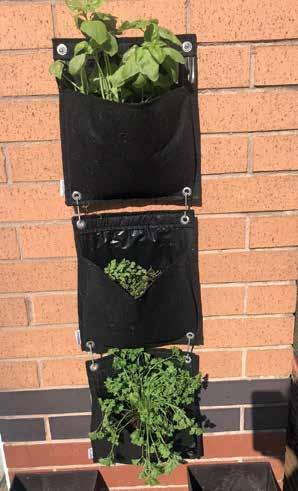
8 minute read
Personal, social and emotional development .........................32
they move more and they socialise more harmoniously, which all contribute to happy kids and a happy Early Years teacher. Try taking a moment to monitor children's behaviour as you introduce a lesson outdoors versus when you do it indoors. It is likely you will notice a difference in engagement, excitement and concentration. It is also well worth watching some clips from Richard Louv, author of Last Child in the Woods, who speaks of naturedeficit disorder and how less outside time for children can lead to anxiety, depression and other mental illnesses.
Going outside is a mental health boost on its own, but it can also help to drop things that affect confidence such as competitions, star of the day, etc. Some children are not affected by these, but some are. You can try starting outdoor lessons with yoga and ending with meditation. Or you can use the outdoors as an antidote when classroom teaching isn’t working so well; if you feel the mood dropping in the classroom, take learning outside.
More kids playing
We will strive to make our lessons as active as possible by incorporating more play into our curriculum.
Why?


Our approach only uses active, engaging, playful ideas because children benefit from moving! It makes us all feel better and I see more engaged learners when we make our teaching more active. When I visit Early Years settings it is fabulous to see that most now have indoor continuous provision so that children can learn and play and move, but do the children get out of breath? Outdoor spaces usually have more room for children to move and this makes lessons a good workout for us all.
How?
Thinking of active lessons that maintain a high quality of learning is easier said than done. One way of achieving this is to think like a child: think back to the games you played when you were younger and how these could be incorporated into achieving your learning objective. Fun games for children often involve active play such as chasing, jumping, running or skipping. This book is full of ideas to get children moving and learning. Sometimes teachers find it trickier to manage behaviour outside. My advice to practitioners is to develop an outdoor learning behaviour policy; this helps everyone to understand what is expected when we take learning outside. Try wording the policy with ‘do’s rather than ‘don’t’s, e.g. ‘We do shout and show excitement, but we stop and listen when the teacher or facilitator is talking’.
How to get started
Gaining momentum
If you haven't already, set up a social media page such as Instagram to involve parents and carers in your journey (email the Muddy Puddle Teacher team and we can help spread the word too). Sharing pictures of your progress may even inspire families to do similar things at home. If you are starting from scratch and developing your outdoor space then show this too, and parents and carers may even help by bringing in things you need. It is also a nice way of keeping a record for you to use and show the children at the end of the year.
Clothing
The right clothing is needed to go outside, but it does not have to be expensive. Here are some options depending on your budget: ✿ Big, juicy budget. There are plenty of shops selling insulated all-in-one suits.
These are the dream: fleecy on the inside and waterproof on the outside. Find suits with hood attachments if possible, and make sure they are tight around the ankles and wrists. Get one for each child and keep them in your setting. Try www.muddypuddles.com or www.spottyotter.co.uk for some great options. ✿ We have a bit of a budget. Get one class, age range or group a set of ski suits as described above but share with another class. If you get them the age older, the children could potentially share over two year groups. ✿ No budget – help me! Call charity shops up and ask them to keep aside any waterproof items including trousers, jackets and hats.
Also go on a hunt for onesies (the fabric versions). They are not waterproof but are useful as an added layer for warmth and can go over uniforms to keep mud off clothing.
Then place coats on top. This, of course, is if you have very few other options. You can also ask parents or carers to donate spare clothes to keep in your setting for spontaneous outdoor learning. You could even hold a ‘hand-me-downs’ day where parents swap outdoor clothing amongst different age groups. Some schools also now have waterproofs as school uniforms but this option may not be appropriate in deprived areas. Some funding is available for sports, and pupil premium can support your outdoor learning if you’re in England.


The Muddy Puddle Teacher Approach is about getting everyone outside more. No matter your confidence level, this book is here to help you take your teaching outside step by step. So here are many ways you can make a start teaching outside depending on your level of confidence:
I am new to this!
✿ Try doing a weekly phonics activity that is fully outside, then start to build this up to two or three times a week. ✿ Try taking a 10-minute maths session outside once a day. ✿ Make Muddy Puddle time part of your morning routine. Try starting the day with yoga or mindfulness outside. ✿ Search for online resources on the
Muddy Puddle Teacher website. You may want to take simple worksheets out for now while you gain confidence, such as butterfly spotter or ‘signs of spring’ worksheets.

I have done a bit of outdoor learning and need help moving to the next step
✿ Start to look at and build your continuous provision. Is it following the three muddy ‘M’s? ✿ Are children having a lesson outside daily? Try building in daily phonics or maths sessions outside, and marking outdoor lessons in green on your lesson planning so you can keep track. ✿ Have you now moved to using just natural resources and limiting the use of any worksheets outside? ✿ Think about which subjects you could concentrate on taking outside next. I am a Forest School Leader or I have done lots of outdoor learning
✿ Use this book for fresh new ideas and to save you time! ✿ Once you are experienced using leaves, stones and sticks, move to differing lengths of bamboo canes and experiment with other natural resources. ✿ Have you now taken every area of the curriculum outside? Have you taken a full unit of a subject outside? ✿ Does your planning work around the seasons? How is your outdoor learning sustained all year round? ✿ Start recording the impact it is having on the children as a whole. ✿ Think about the ways you are supporting children with special educational needs and disabilities in their outdoor learning. ✿ How can you ensure children's transitions are supported in terms of how much outdoor learning they then do in the following year? The Muddy Puddle Teacher Approach is inclusive to all practitioners, no matter what sort of outdoor space you have. Below are some typically challenging spaces and ideas I have suggested to schools and nurseries that worked well for them. ✿ Concrete jungle. Get more trees in your setting by upcycling tyres and using them as planters for the trees. Contact a local engineer to get any spare tyres they may have, then visit the Woodland Trust website (or other nature charities) for some free trees. Stack two tyres on top of each other, fill them with compost and tuck them away into corners. ✿ Very small spaces. Head to vegtrug.com which has some amazing wall planters to hang on walls and fences. They will give you an extra planting space you didn't even know you had! Plant beautiful flowers in them for natural colour, or herbs and small vegetables work well too. They also sell raised beds that can be very versatile and taken inside too. ✿ We have lots of traffic around us. If you have lots of traffic around you it can be hard to find tranquillity outside. Look at taking a speaker outside and play natural sounds such as birdsong. There is lots of music out there for meditation and mindfulness that can help. Whatever your budget, you can access our approach. Sticks, stones and mud can be found anywhere! As much as we would always suggest using natural resources and what's native to you in your country, sometimes we do get the gift of a budget to spend on resources and you would be right to spend it on your outside space. My favourite place to head for almost all of the big outdoor learning equipment is cosydirect.com. You can get milk crates, small and large loose parts play items, seating, large play equipment, small maths games, etc. You name it, they have it! The website muddyfaces.co.uk also has a range of inspiration in all areas of outdoor learning and Forest School.






